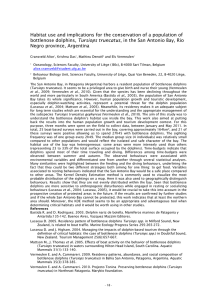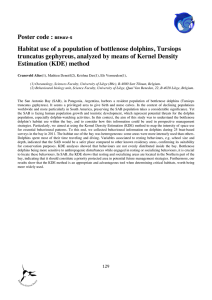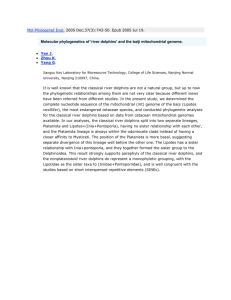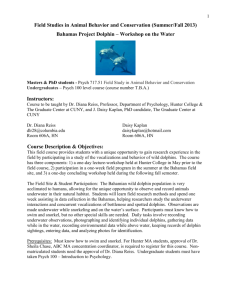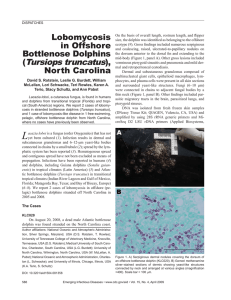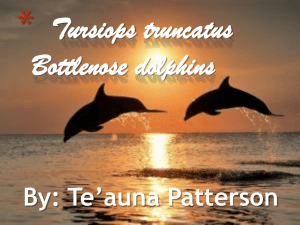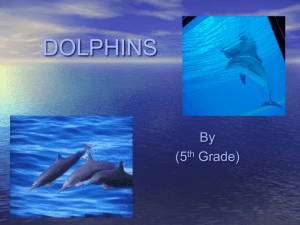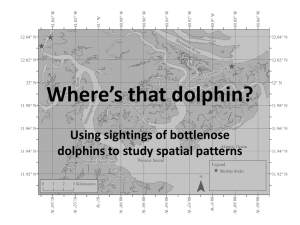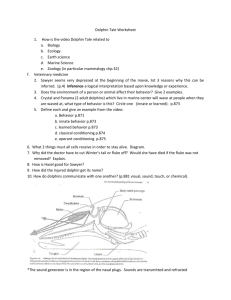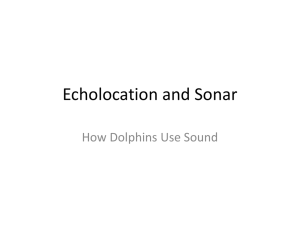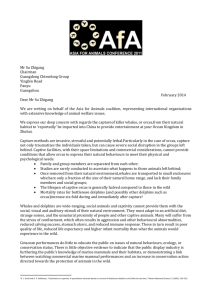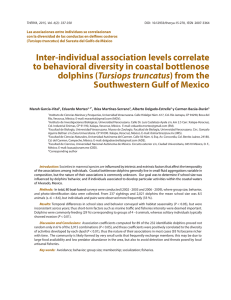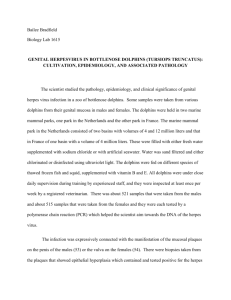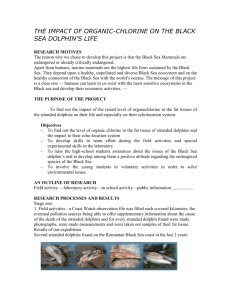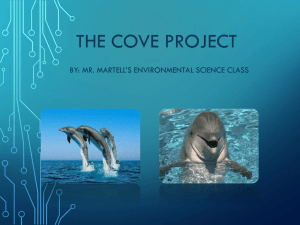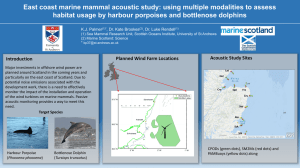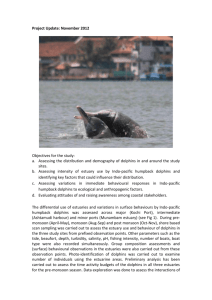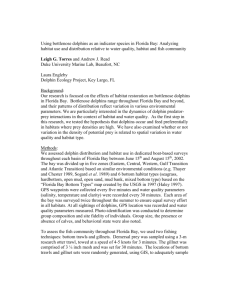first genetic characterization of the population of the bottlenose
advertisement
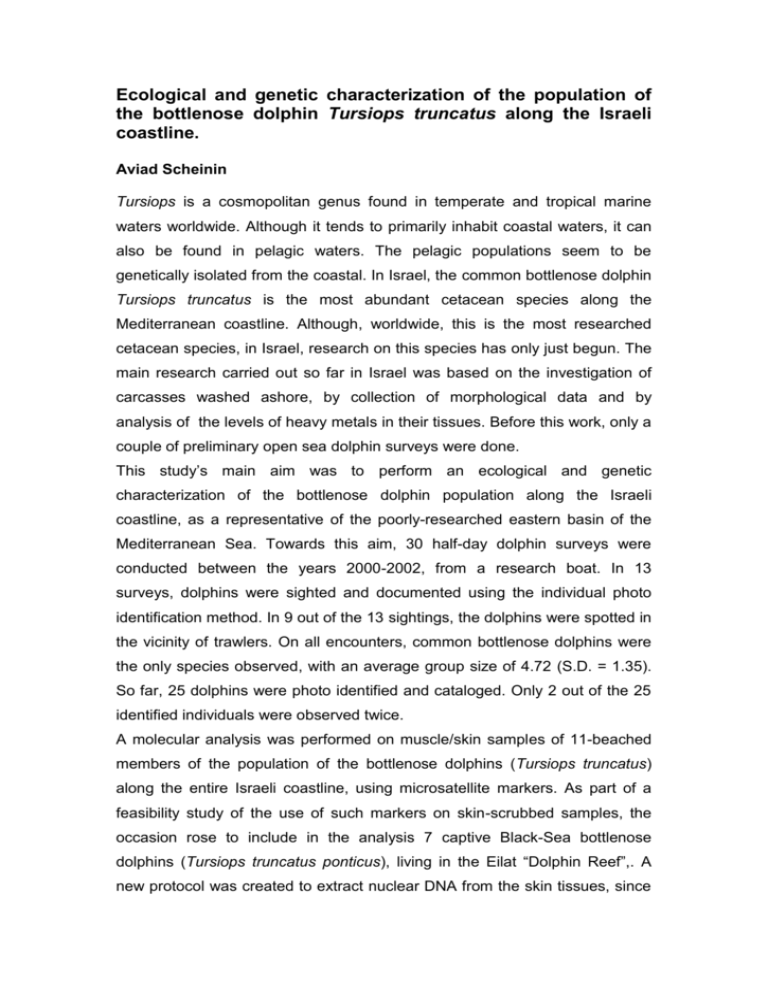
Ecological and genetic characterization of the population of the bottlenose dolphin Tursiops truncatus along the Israeli coastline. Aviad Scheinin Tursiops is a cosmopolitan genus found in temperate and tropical marine waters worldwide. Although it tends to primarily inhabit coastal waters, it can also be found in pelagic waters. The pelagic populations seem to be genetically isolated from the coastal. In Israel, the common bottlenose dolphin Tursiops truncatus is the most abundant cetacean species along the Mediterranean coastline. Although, worldwide, this is the most researched cetacean species, in Israel, research on this species has only just begun. The main research carried out so far in Israel was based on the investigation of carcasses washed ashore, by collection of morphological data and by analysis of the levels of heavy metals in their tissues. Before this work, only a couple of preliminary open sea dolphin surveys were done. This study’s main aim was to perform an ecological and genetic characterization of the bottlenose dolphin population along the Israeli coastline, as a representative of the poorly-researched eastern basin of the Mediterranean Sea. Towards this aim, 30 half-day dolphin surveys were conducted between the years 2000-2002, from a research boat. In 13 surveys, dolphins were sighted and documented using the individual photo identification method. In 9 out of the 13 sightings, the dolphins were spotted in the vicinity of trawlers. On all encounters, common bottlenose dolphins were the only species observed, with an average group size of 4.72 (S.D. = 1.35). So far, 25 dolphins were photo identified and cataloged. Only 2 out of the 25 identified individuals were observed twice. A molecular analysis was performed on muscle/skin samples of 11-beached members of the population of the bottlenose dolphins (Tursiops truncatus) along the entire Israeli coastline, using microsatellite markers. As part of a feasibility study of the use of such markers on skin-scrubbed samples, the occasion rose to include in the analysis 7 captive Black-Sea bottlenose dolphins (Tursiops truncatus ponticus), living in the Eilat “Dolphin Reef”,. A new protocol was created to extract nuclear DNA from the skin tissues, since there is a lack of information about this procedure in the literature. Nine microsatellite markers (EV01, EV14, EV94, TexVet03, TexVet05, TexVet07, D14, D22 and D28), taken from the literature, were applied on the combined study group. The results showed that the Israeli Mediterranean coastal dolphins may be divided into 2 subpopulations, northern and southern. When comparing the Black-Sea dolphins to Mediterranean dolphins using cluster analysis, a clear difference (an appreciable genetic distance?) is demonstrated. The latter result lends support to the genetic isolation of Tursiops truncatus ponticus and, if further substantiated, may help to implement specific management plans In order to adopt international agreements, such as the recently-failed attempt to move it from Appendix II to I for better local protection. This research is another brick in the foundation of cetacean research in Israel. Supervised by: Prof. Yoram Yom-Tov, Dr. Ofer Mokady & Dr. Dan Kerem


